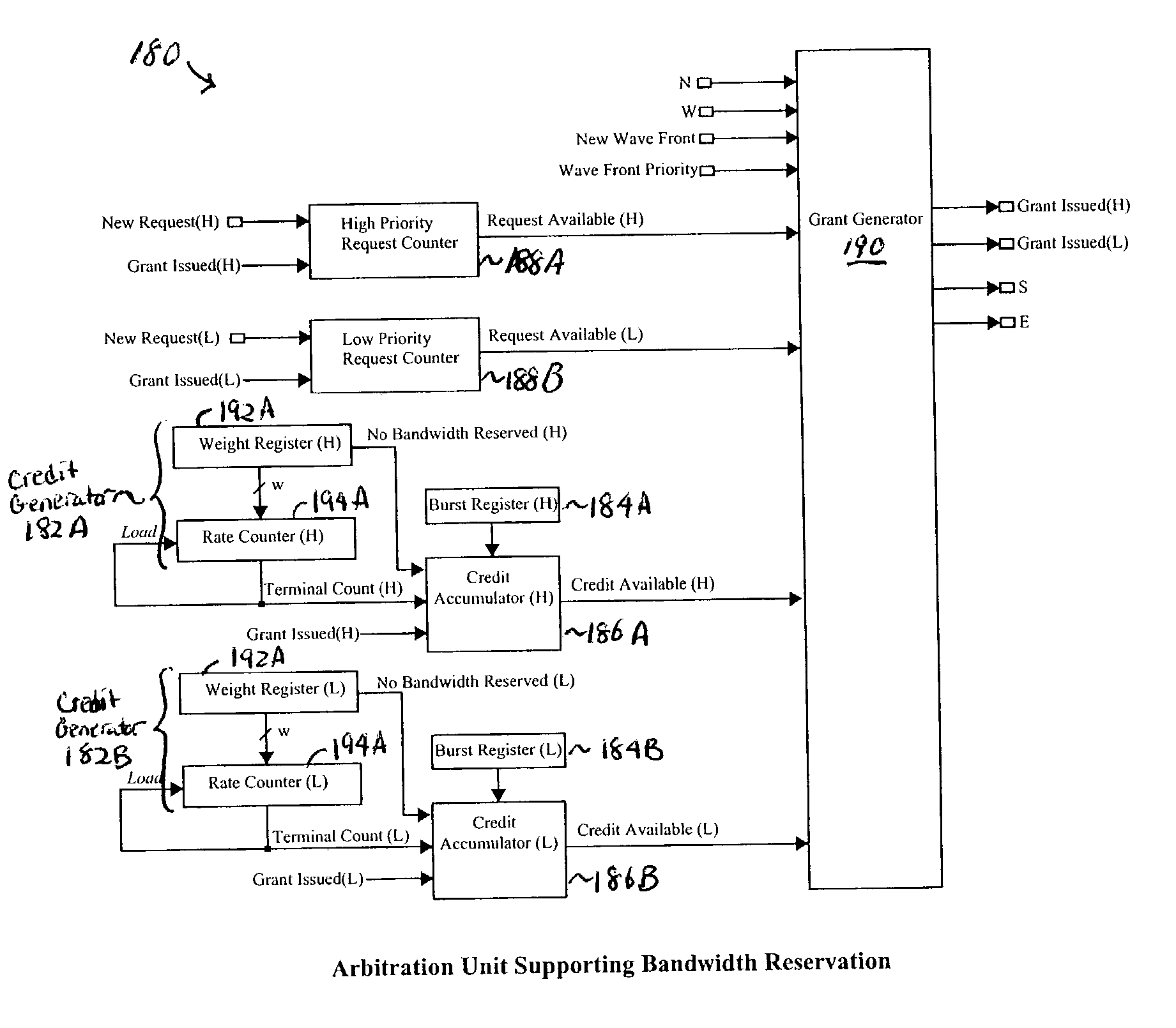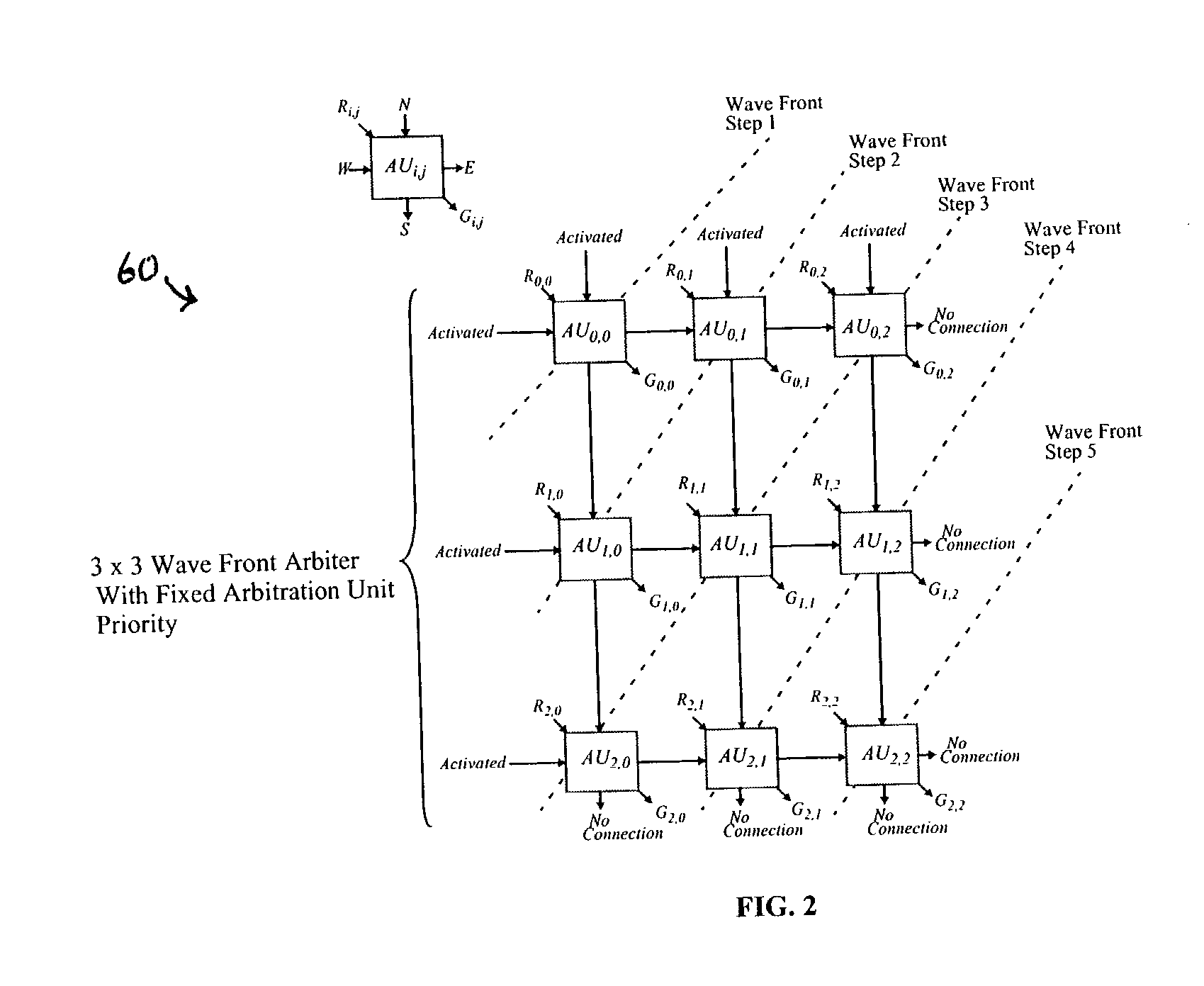Cell based wrapped wave front arbiter (WWFA) with bandwidth reservation
a cell-based, wave-front arbiter technology, applied in the field of cell-based switch fabric, can solve the problems of delay in traffic through switches, insufficient bandwidth distribution, and inability to connect between each network station and the hub
- Summary
- Abstract
- Description
- Claims
- Application Information
AI Technical Summary
Problems solved by technology
Method used
Image
Examples
example
[0147] In order to illustrate the potential throughput increase when using an arbiter with speedup, consider the following six connections between the input and output ports of a 3.times.3 system, with each connection reserving 50% of a port's bandwidth:
[0148] Port 0 to Port 1, Port 0 to Port 2;
[0149] Port 1 to Port 0, Port 1 to Port 2; and
[0150] Port 2 to Port 0, Port 2 to Port 1.
[0151] A wave front in a WWFA without speedup will consider a pair of these connections at a time (based on the stage position of the diagonal wave as it advances through the arbiter array). (Refer to FIGS. 4A-4C for the following discussion.) Therefore, when a wave front is initiated at stage 0, a connection will be made between input port 2 and output port 1, and between input port 1 and output port 2. No other connections can be made as the wave front propagates through stages 1 and 2. Similarly, when a wave front is initiated at stage 1, a connection will be made between input port 0 and output port 1,...
PUM
 Login to View More
Login to View More Abstract
Description
Claims
Application Information
 Login to View More
Login to View More - R&D
- Intellectual Property
- Life Sciences
- Materials
- Tech Scout
- Unparalleled Data Quality
- Higher Quality Content
- 60% Fewer Hallucinations
Browse by: Latest US Patents, China's latest patents, Technical Efficacy Thesaurus, Application Domain, Technology Topic, Popular Technical Reports.
© 2025 PatSnap. All rights reserved.Legal|Privacy policy|Modern Slavery Act Transparency Statement|Sitemap|About US| Contact US: help@patsnap.com



